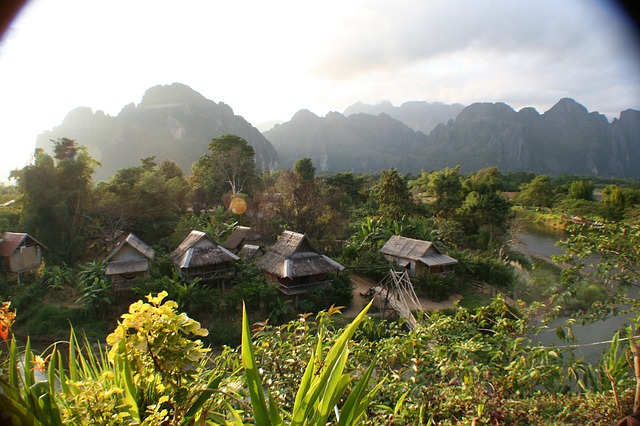By Tim Lambert
Ancient Laos
The earliest inhabitants of Laos were hunter-gatherers. Later they were farmers growing rice and pulses. The first farmers used stone tools but from about 2,000 BC bronze was used in Laos and from about 500 BC iron.
However, unlike Vietnam, the people of Laos were influenced by Indian rather than Chinese culture. From the 1st century AD, Indian merchants introduced Theravada Buddhism into Laos.
From the 9th to the 13th century the Khmers from Cambodia ruled much of what is now Laos.
However, in the 14th century, the ancestors of today’s Laotians founded a kingdom called Lan Xang. The first king was the ambitious Chao Fa Ngum, who was succeeded by his son Phaya Samsenthai in 1373. He ruled until 1421 and under him, Lan Xang became a prosperous kingdom. Unfortunately, his successors were less skillful rulers.
In the 16th century, Lan Xang was threatened by Burma but it managed to retain its independence.
In the 17th century, greatness was restored to Lan Xang by Souriyavongsa (1637-1694). His long reign is seen as a golden age. During it, Lan Xang was powerful and prosperous. However, when Souriyavongsa died in 1694 he did not leave an heir.
In the early 18th century Lan Xang split into 3 regions centered on Luang Prang in the north, Vientiane in the middle, and Champasak in the south. When it was divided in that way Laos was weakened and fell prey to Siam (Thailand). In 1779 Siamese forces occupied Vientiane. Afterward, the three Laotian states were dominated by Siam (Thailand).
In 1804 Anouvong became king of Vientiane. By 1825 Anouvong was determined to overthrow Siamese domination and restore the kingdom of Lan Xang. In 1827 he advanced into Siam but was defeated and forced to retreat. Anouvong fled to Vietnam. Several months later he returned to Vientiane but was captured by the Siamese (Thais) ending all hope of a restored Lan Xang.
The French in Laos n In 1867-68 a Frenchman called Francis Garnier traveled through Laos. However, the French left Laos alone for two decades. Then in the late 1880s and early 1890s, French influence in the area grew. Finally, in 1893 the Siamese formally surrendered all territory east of the River Mekong to the French.
Laos became part of the French empire in Southeast Asia. However, the French took little interest in Laos and few French people lived there.
In 1941 the French fought a war with the Thais for Laotian territory. The Japanese forced an armistice and parts of Laos were given to Thailand. Then in April 1945, the Japanese forced the pro-French king Sisavang Vong to declare independence from France. Following the Japanese surrender in September 1945 Prince Phetsarath was prime minister of Laos. He headed a government called Lao Issara (Free Lao).
However Laotian independence did not last long. In March 1946 the French invaded Laos and by May 1946 they were in control of the country again.
Modern Laos
Then in 1950, the Pro-Communist Prince Souphanouvong formed an organization that became known as Paphet Lao (Land of the Lao). At first, it was a relatively small organization backed by the Viet Minh.
Meanwhile, the French were losing control of Southeast Asia and in 1953 they withdrew from Laos, which became an independent, constitutional monarchy.
However, Laos in the 1950s was a divided country. Most of it was ruled by Royalist governments supported by the USA while parts were ruled by the Pro-Communist Paphet Lao assisted by their allies the Viet Minh.
All attempts to find a political solution failed and in the 1960s Laos became drawn into the wider Asian War. From 1964 to 1973 the USA bombed Paphet Lao territory but failed to defeat them. Then in 1975 South Vietnam and Cambodia fell to the Communists. Seeing the way things were going Royalists fled from Laos allowing the Paphet Lao to take over. The Lao People’s Democratic Republic was founded on 2 December 1975.
A full Communist regime was introduced. However, in 1988 the government of Laos introduced market reforms. As a result, the economy of Laos began to grow rapidly. Today Laos is still a poor country but it is developing rapidly and poverty is declining. Laos also has great tourism potential.
Meanwhile, Laos joined ASEAN in 1997. It joined the WTO in 2013. Today the population of Laos is 7.6 million.

Last revised 2025